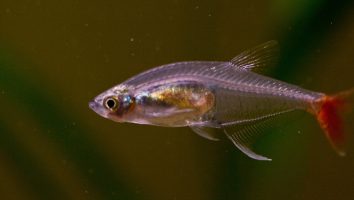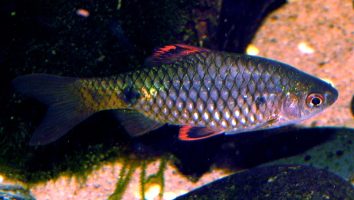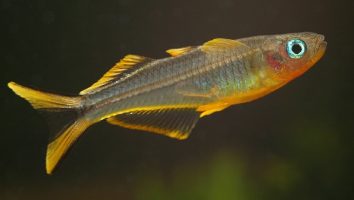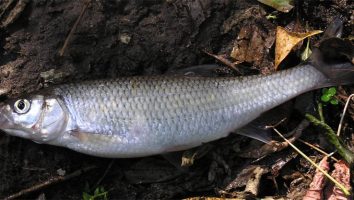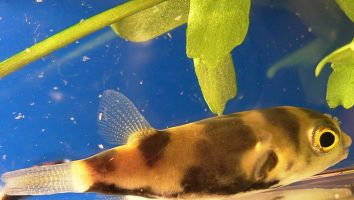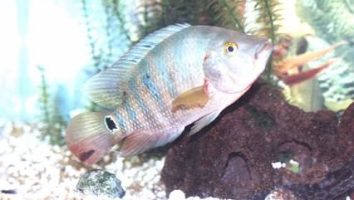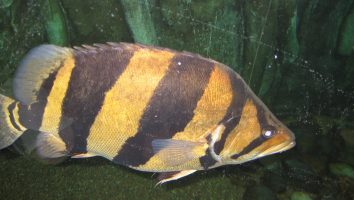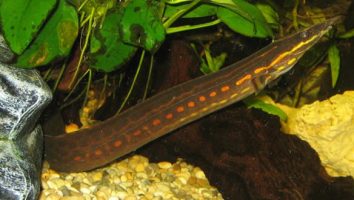The Dalmatian molly is a beautiful freshwater fish that is perfect for beginner aquarists. They are easy to care for and are very tolerant of different water conditions.
This guide will teach you everything you need to know about Dalmatian molly care. You’ll learn about their diet, size, lifespan, and more!
Table of contents
Species overview
The dalmatian molly (Poecilia latipinna) is a type of freshwater fish that’s native to Central America. They’re most commonly found in Mexico, but they can also be found in parts of Belize, Guatemala, and Honduras.
Dalmatian mollies prefer slow-moving waters with a lot of vegetation. This could be anything from a swamp to a river with a lot of plants growing along the banks.
They’re a very peaceful fish, so they make a great addition to any community tank. They’re also one of the easier fish to breed, so they’re a good choice for beginner aquarists.
The dalmatian molly gets its name from its black and white spotted coloration. This is a very striking pattern that stands out against most other fish.
Appearance

The Dalmatian Molly is one of the most beautiful freshwater fish out there. They’re easily recognizable by their unique coloration.
These fish are a pale white color with black spots that are evenly distributed all over their bodies. The spotted pattern continues down to their fins as well.
The fins on the Dalmatian Molly are all very trim and modest in size. The dorsal fin is slightly longer than the others and starts about two-thirds of the way back on the body.
The caudal fin is forked and symmetrical. All of the fins have a very soft and gentle look to them.
The Dalmatian Molly has a long and thin body shape that tapers off at the end. This gives them a very sleek and elegant appearance.
Lifespan
The Dalmatian Molly is a long-lived fish, with a lifespan of up to 8 years in captivity. This is much longer than most other fish in the aquarium trade.
As with all fish, the Dalmatian Molly’s lifespan can be impacted by a number of different factors. Things like water quality, diet, and stress levels can all shorten their life expectancy.
Size
The Dalmatian Molly grows to be about 4 inches in length.
Tank
Tank Size
The recommended tank size for Dalmatian mollies is 20 gallons. This is assuming you’re keeping them in a school of at least 5 or 6 fish (which you should).
We personally recommend a slightly larger tank if you can accommodate it. Every extra space will make a big difference and allow you to keep a larger school or more tank mates if you’re interested in a community tank.
Water Parameters
The Dalmatian molly is a tropical fish that requires warm water to thrive. They are also very sensitive to changes in water parameters. For that reason, you need to be diligent about monitoring the water quality in your tank.
You should also do regular partial water changes to keep the water quality high. I recommend doing a 25% water change every week.
- Water Temperature: 72°F to 82°F
- pH Levels: 7.0 to 8.5
- Water Hardness: 8 to 18 dGH
- Alkalinity Levels: 4 to 8 dKH
What To Put In Their Tank
When it comes to setting up the inside of an aquarium for Dalmatian Mollies there are a few things you need to take into account.
The most important thing to remember is that these fish come from brackish water. This means that the water in their tank needs to have a higher salt content than most freshwater fish.
The best way to achieve this is to use marine salt when you’re doing water changes. You can also add a small powerhead to help circulate the water and keep the salt evenly distributed.
In terms of plants, you’ll want to stick to hardier species that can tolerate saltier water. Things like Java Fern, Anubias, and Vallisneria are all great choices.
As for the substrate, go with something that’s dark in color. This will help bring out the colors of your fish. Gravel is always a good choice, but feel free to get creative.
Common Diseases
There are a few potential diseases that your Dalmatian Molly could contract. The most common of these is ich, which is a parasite that affects freshwater fish.
This will present itself as white spots on the body of your fish. If you notice this, you’ll need to take action immediately and begin treatment.
Other potential diseases include problems with the swim bladder, fungal infections, and bacterial infections.
These are all relatively common in the fish world, but the good news is that they’re usually quite easy to treat.
As long as you keep a close eye on your fish and act quickly if you notice anything out of the ordinary, you should be able to keep your Dalmatian Molly healthy and happy.
Behavior & Temperament
The Dalmatian molly is a peaceful fish that is relatively easy to care for. These fish are not aggressive and get along well with other peaceful fish. They are a good choice for a beginner aquarium.
Dalmatian mollies are active fish that enjoy swimming in open areas. They are not shy and will often be the first fish to greet you when you approach the tank. These fish are curious and playful. They may nibble on plants in the aquarium, but they are not known to be destructive.
Dalmatian mollies are livebearers, which means they give birth to live young. Females will typically give birth to between 10 and 60 fry at a time. The fry are small and vulnerable, so it is important to have plenty of hiding places in the tank for them to seek shelter.
Tank Mates
The Dalmatian molly is a peaceful fish that does well in community tanks. They’re not too large, so they can be kept with a wide variety of tank mates.
These fish are also livebearers. This means that they give birth to live young as opposed to laying eggs.
Since the fry are born fully-formed, they’re free-swimming and able to fend for themselves almost immediately. This is good news if you don’t want baby fish in your tank.
Some compatible Dalmatian molly tank mates include:
- Platy Fish
- Guppies
- Swordtails
- Mollies
- Endler’s Livebearers
- Pygmy Corydoras
- Neon Tetras
- Harlequin Rasboras
Breeding
The Dalmatian molly is a pretty easy fish to breed in captivity. They don’t have any special requirements and will typically start breeding on their own when they reach maturity (which is around 6 months old).
To increase the chances of breeding, you can set up a separate breeding tank. It should hold at least 20 gallons of water. The temperature should be between 78 and 82 degrees Fahrenheit.
Add some live plants and plenty of hiding places. Driftwood is a great option.
When ready, add one male for every two females. The male Dalmatian mollies are the ones with the longer fins.
The female will lay her eggs in a secluded spot. The male will then fertilize them. After that, the female will pick up the eggs in her mouth and carry them around until they hatch (which takes around 3 days).
Once the fry have hatched, you can remove the adults and raise the fry on their own. Feed them baby brine shrimp and crushed-up flake food.
Conclusion
Dalmatian mollies are a great choice for beginner aquarists or anyone looking for a low-maintenance fish.
They’re relatively hardy and can adapt to a wide range of water conditions, which makes them very forgiving if you make a mistake.
They’re also social creatures that do best in groups, so you’ll need to purchase at least 3-4 fish if you want to keep them happy and healthy.
All in all, we think they’re a great choice for anyone looking for an easy-to-care-for fish that will add some personality to their tank.

